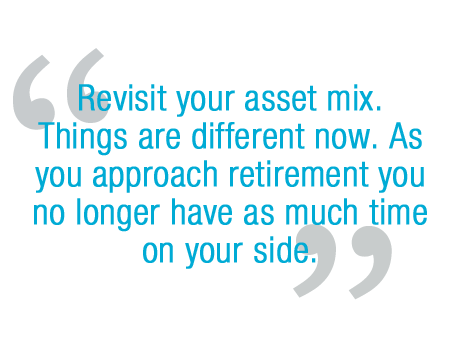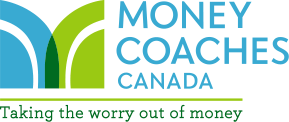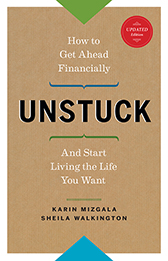By Karin Mizgala, Co-Founder and CEO Money Coaches Canada

It’s not uncommon for folks approaching retirement to think that retirement planning is finally behind them. They’ve put in the years of saving and investing; now it’s time to Google hotels in Santorini, Greece, right? Well, it is… and it isn’t! There are many decisions about your savings and investments that you need to make to ensure that you can kick back and enjoy retirement.
Marisa’s Story
Marisa is a 60-year old environmental engineer considering retirement within 3-5 years. She manages her own investments ($800,000), mainly in Exchange-Traded Funds (ETFs) and a few stocks – including shares in a company she used to work for. She has accounts with several different financial institutions – Qtrade, TD Direct Investing and BMO. She is passionate about the environment and would prefer to invest in socially responsible investments. She is very busy and wondering if it’s time to reconsider her investment strategy. She likes the fact that she isn’t paying high investment fees, but she wants to spend more time travelling in retirement and is worried that she won’t be able to watch her portfolio as closely. She has money invested in several Registered Retirement Savings Plans (RRSPs), Tax-Free Savings Accounts (TFSAs) as well as bank accounts and non-registered investment accounts.
5 Investment Strategy Tips
Here are the 5 investment strategy tips that I gave Marisa to help her reach her retirement goals and simplify her life:
 Streamline. Consolidate your accounts. A bank account here, an investment account there; next thing you know you have eight or 10 investment accounts! It creeps up without you really noticing it. Many accounts may not be a problem when the focus is on saving, but it’s less practical as you plan for tax-efficient draw down strategies through retirement. Aim to have no more than 3-5 investment accounts per person – ideally 1 RRSP, 1 TFSA, and 1 non-registered account, though you may need additional accounts, for example a Registered Retirement Income Fund (RRIF), Spousal RRSP, or US dollar non-registered account.
Streamline. Consolidate your accounts. A bank account here, an investment account there; next thing you know you have eight or 10 investment accounts! It creeps up without you really noticing it. Many accounts may not be a problem when the focus is on saving, but it’s less practical as you plan for tax-efficient draw down strategies through retirement. Aim to have no more than 3-5 investment accounts per person – ideally 1 RRSP, 1 TFSA, and 1 non-registered account, though you may need additional accounts, for example a Registered Retirement Income Fund (RRIF), Spousal RRSP, or US dollar non-registered account.
If you have multiple accounts with different institutions, you can usually transfer from one investment company to another without incurring tax or too much in transfer costs. Some investment companies will even cover the transfer fees, and at times may even give you a bonus for transferring your assets to them – but be sure to read the fine print of any offer. Check with your financial planner and accountant to assess the pros and cons of consolidating your accounts, and the company you want to transfer to for help with the paperwork. If you want an outside perspective, consider our Investment Report Card™ service.
Hire out. Unless you really enjoy spending your time researching and monitoring your investments, find an investment manager who fits your investor profile (in Marisa’s case that would include offering socially responsible investment options), has transparent and reasonable fees (1-1.25% range for active management for Marisa’s portfolio size, or about half that for passive management at a “roboadvisor”) and has a good track record for investment performance.
If working with a “live” advisor, ensure they are respectful, listen to your priorities, goals and concerns, and is enjoyable to work with. There are over 100,000 investment managers in Canada that want your business – you can afford to be picky!
 Manage your risk and tax-efficiency. Revisit your asset mix. Things are different now. As you approach retirement you no longer have as much time on your side to recover from market downturns. Even though you won’t need the bulk of your portfolio immediately, once you’re retired you will likely need your portfolio to start paying you a “salary.” And you’ll need to re-assess your relationship to risk. How freaked out would you be if the stock market drops and your portfolio goes down by 25%? While you may be more cavalier about these kinds of fluctuations when retirement is way down the line, you may feel different as you near retirement.
Manage your risk and tax-efficiency. Revisit your asset mix. Things are different now. As you approach retirement you no longer have as much time on your side to recover from market downturns. Even though you won’t need the bulk of your portfolio immediately, once you’re retired you will likely need your portfolio to start paying you a “salary.” And you’ll need to re-assess your relationship to risk. How freaked out would you be if the stock market drops and your portfolio goes down by 25%? While you may be more cavalier about these kinds of fluctuations when retirement is way down the line, you may feel different as you near retirement.
Most of my retired clients’ portfolios have an asset mix of 50-60% equity/stocks and 40-50% cash and fixed income/bond investments. You may not shoot the lights out when the market is hot, but you can avoid some of the financial or psychological impact of a higher risk portfolio when the markets go down.
Stay engaged. You don’t need to “get under the hood” but you do need to measure the progress of your portfolio against your goals – goals which could be dynamic in the years coming up to and as you transition into and navigate retirement. You may work less, start receiving pensions or have paid off your mortgage – all things that could change the priorities and strategy for your portfolio.
Keep your advisor informed of your cash flow needs, income sources and other life changes and priorities. Your investments need to reflect your unique circumstances and evolve as they do.
Hold your investment manager accountable. While you may like your advisor and are happy to hand over the reins, be sure you delegate responsibility, not abdicate it. The best way to keep on top of your money is to review the performance of your portfolio at least annually.
Ask your advisor to show you your returns for the last one, three, five and 10 years and since you started investing with them, and (very important!) compare your returns against the returns of an appropriate market benchmark, i.e. a synthetic portfolio made up of broad market indices weighted in similar proportions to your actual portfolio. For example, if your portfolio is mainly large company Canadian stocks and mutual funds, then you would likely compare your returns against the returns of the S&P/TSX index… both on an after-fee basis!
 Marisa mentioned to me that she did really well managing her own investments over the last five years – she earned 5%. But when I looked at her portfolio returns against the returns in the markets she was invested in, her performance didn’t measure up. Meet with your advisor at least once a year and be sure you’re getting the rate of return numbers for YOUR overall portfolio, not just a bunch of stats and graphs that don’t mean a thing to you.
Marisa mentioned to me that she did really well managing her own investments over the last five years – she earned 5%. But when I looked at her portfolio returns against the returns in the markets she was invested in, her performance didn’t measure up. Meet with your advisor at least once a year and be sure you’re getting the rate of return numbers for YOUR overall portfolio, not just a bunch of stats and graphs that don’t mean a thing to you.
You’re Almost There!
If your retirement is approaching, take stock and be sure your investments are well-positioned for the future you’ve worked so hard for.
If you would like an independent, unbiased review of your portfolio, book a chat with an Investment Coach or check out the Investment Report Card™.
This post first appeared in 2019. It has been updated with current data and/or information and republished.


